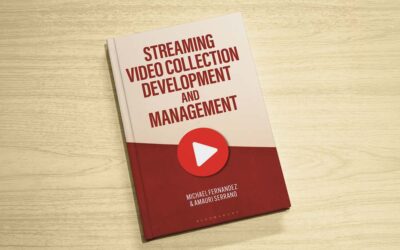Librarians Phasing in a New Normal: Part II. Where Do You Want to Go?
Miriam Kahn, MLS, PhD
As we enter the next phase of our lives and the reshaping of work, life, and society, we must reframe questions we ask ourselves about the future.
It’s time to step out of crisis mode, an unsustainable emotional period, and move forward into planning for now and the future. We’ve been in the recovery period after a “disaster”. Special librarians must take the reins and move into the next normal focused on resumption and rebuilding; the pandemic has changed the profession. In disaster response terms, recovery and resumption are the middle phase (planning for the next disaster comes last). This is the phase where we rebuild intentionally and for the better.
Food for thought and inspiration
In the scheme of things, six months isn’t very long but it’s long enough for past procedures to collapse and be replaced by “temporary” and now permanent changes. Six months isn’t “a hiatus.” Six months and counting is a break that’s long enough to demonstrate a perhaps dramatic change in our attitudes, our needs, and our expectations of work and home life.
Michael Shermer’s current article in American Scholar is “The After Time: The Future of Civilization after COVID-19”.1 Shermer writes about the “After Time”, building upon a reference from the original Star Trek episode “Miri,”2 to describe the divide between before and after. It’s the perfect example to visualize life before and after a pandemic or a catastrophic event. He uses that episode to help us move from before to after instead of being stuck in the middle time, which is where we are now.
Part of moving forward is to recognize that work and home life is “never going back to normal,” that is before March 2020. The way we are currently working represents our work environment and procedures. Our at-home lives have morphed from how they were before we “sheltered in place” because of COVID-19 to what they are now. That’s part of our past. Life is never going to be like before.
Small steps forward
Life and society are moving forward. Information professionals and their ability to disseminate information and resources with their clientele are also moving forward, changing and shifting work routines to incorporate new procedures and cultivate new expectations.
Moving forward is essential and we are all doing that. Re-reading “The After Time,” you’ll note Shermer never mentions libraries and cultural institutions, the hallmarks of our society and social interaction, let along the advancement of intellectual curiosity and “entertainment.” Shermer does discuss changes in work environments and communications between employees and clients. He describes a possible future for universities and colleges and all educational institutions. But he leaves out a plausible future for advancements and changes in the availability of accessible telecommunications and internet and the increasingly important distribution of information in all its diverse aspects.
As information professionals, it’s time to articulate what’s important for our profession and society, what’s real and realistic and where we want ourselves and our profession to be in this new reality. As we continue providing and disseminating information, we need to shift our clients’ expectations to how we offer reference services today.
Asking Questions
Now is the time to ask serious questions about the future of our work as information professionals. Rather than ask of yourself or your department, “what’s your five year plan?” or “where do you see yourself in five years? Ten years? Even one year?” we need to ask:
- How has your work as an information professional has changed over the past six months?
- What have you done to improve productivity, work flow, and researcher satisfaction?
- Which of the changes do you see as permanent, that is, you cannot imagine “going back to how we did it before?”
- What needs improvement, streamlining, and innovation to deliver requested information in a timely manner?
- What types of information are being disseminated and what’s left in the box or eliminated completely?
Other questions revolve around uses of technology. Which communication methods work the best for your researchers? Is it time to adopt some other communication system other than e-mail, chat, and video conferencing? If so, what?
Since disseminating complex information is a key role for information professionals, are you recording short video explanations, sending e-mails, or doing something else? Take a step back and evaluate which communication method is most effective.
If we think more holistically about the future, we have bigger picture questions. Consider where YOU see your work routines, delivery of information, and work as an information professional moving by the end of this year (2020).
Pay attention to positive changes
As we look toward the near future, pay attention to which aspects of new routines are productive and worth retaining. Ask yourself your colleagues, and your clients:
- Can you imagine continuing to deliver and receive information and data in the same manner with tweaks here and there into the next year?
- Can you imagine continuing to work from a remote location and continuing to be productive and satisfied with your work performance?
This next step of recovery and resumption requires paying attention and looking at the bigger picture. That’s where journaling and some introspection comes in.
Reflect on “where we want to go next.” Writing regularly in journals and blogs and engaging in serious self-reflection enhances our ability to consider future initiatives. The object of the exercise is to look over recent experiences to explore what you can do differently and improve.
Now is the time to collect data on what you’ve accomplished over the past six months.
- How did reference requests came to you,
- What tools and online resources did you use
- How were the results, data, and materials delivered?
- What has changed?
- What do you want to improve, what can be jettisoned?
- What’s been sidelined that could go away forever?
It’s time we recognize that “we’ve always done it that way” is gone forever if we aren’t doing it now, in this remote working environment and society. We aren’t going back to the old routines.
We adopted the new routines over the past half year, just as we have adopted online catalogs and let our precious, all important card catalogs continue to collect dust. As an analog librarian, educated in the pre-computer age of libraries, I never imaged I’d work without a card catalog, paper indices, and paper & pencil, but I do, every day. While analog catalogs work and are essential for understanding how information is arranged, organized, and accessed, the world of information professionals has moved beyond paper to bits and bytes, pixels, and so much more.
Opportunity
We have the opportunity to reshape our profession, to help it evolve into a needed, innovative profession that’s not “going away.” Books, journals, and online information are here to stay. Now is an opportunity to push into the future, to redesign our work, our profession, and the services we provide.
Recognize this in-between time as an opportunity to stop clinging to what was before and deliver information using the tools at our disposal in the twenty-first century.
We have a “once in a lifetime” opportunity to move forward and adding meaning to the services we provide as information professionals. There are no shortcuts. We’ll take a few steps backward to move forward and, in doing so, find a better way to disseminate information to our researchers.
Summing it up
Intentional rebuilding is part of disaster recovery and resumption. It is the middle time between the onset of the disaster and planning for the next one. Now is the time to recognize what has changed and take control of where you are going.
Using a journal to record and reflect is essential. Through the journal you can look back and identify what you accomplished. Journaling provides an opportunity to imagine a future for information professionals and information delivery.
A great example of moving forward is described by another blogger for Lucidea in “How the National WWI Museum and Memorial Kept Its Employees” by Rachel Cristine Woody, read here.
My next post will continue the idea of resumption and recovery: breaking down barriers and building bridges to our patrons and within our profession.
1 Michael Shermer, “The After Time: The Future of Civilization after COVID-19” American Scholar (August 31, 2020) https://theamericanscholar.org/the-after-time/
2 Star Trek (the original series) “Miri” Episode 8.
Miriam Kahn, MLS, PhD
Miriam B. Kahn, MLS, PhD provides education and consulting for libraries, archives, corporations, and individuals. See Miriam’s pieces for Lucidea covering library technology and skills and strategies for special librarians. Refresh your knowledge of Lucidea’s flagship ILS, SydneyEnterprise, here.
Similar Posts
Growing Your Leadership Skills: 7 Tips for Special Librarians
Great library leaders aren’t born—they’re made through learning self-reflection and practice. Here are seven strategies to help you grow and lead with impact.
Keeping Up with Copyright and Generative AI: What Special Librarians Need to Know
As generative AI becomes more prevalent copyright law is evolving to address its impact. A new report from the U.S. Copyright Office provides guidance on what is (and isn’t) copyrightable.
Understanding Shadow AI: Risks Costs and Governance
AI can enhance search discovery and efficiency but unsanctioned adoption—known as “shadow AI”—can lead to budget overruns and compliance risks. Here’s how to evaluate AI pricing models and build a governance strategy that balances innovation with cost control.
Interview with an Author: Fernandez on Streaming Video Collection Development
As demand for streaming video in libraries grows so do the challenges of managing access budgets and licensing. Co-author Michael Fernandez shares key insights from his book “Streaming Video Collection Development and Management”.






Leave a Comment
Comments are reviewed and must adhere to our comments policy.
0 Comments